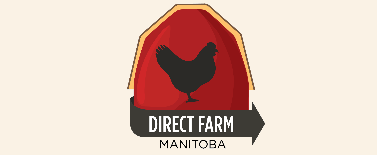2009-12-10 Food Miles
 Thursday, December 10, 2009 at 12:00PM
Thursday, December 10, 2009 at 12:00PM When I grew up in the 1950s and 1960s on a mixed farm in Southern Manitoba I lived about as close to most of our family’s food supply as one can imagine. My mother’s large garden furnished all the vegetables we ate year round. Our meat came from the farm animals we butchered. Sometimes my father even took a load of wheat to a miller to be ground into flour. I remember my father telling my urban uncles that, apart from his need to import salt and sugar onto his farm, we were basically self-sufficient.
And our city relatives descended on our farm every fall in droves to cash in on the local bounty. They especially liked the bargain of a hundred pounds of potatoes for a dollar. My siblings and I, and even our city cousins, had a good idea where our food came from, and it was not from very far away.
A lot has changed since then. Most children growing up today only have a vague idea of where their food really comes from and how far it has traveled to get to them. Even many young parents don’t really know much more.
So how far has the food on your supper plate traveled to get to your table tonight? While I recognize there are problems with coming up with a precise figure, all studies I consulted conclude that distance has been growing steadily over the past half century. One problem, of course, is that the farther food travels the greater will be the carbon footprint it leaves behind. This is especially true when food is transported by trucks or airplanes instead of ships and railways.
It is somewhat ironic that often the food brought in from greater distances is cheaper than food produced locally. This unnatural economic distortion has many roots, including, food subsidies, free-trade agreements, monopolies on food supplies by large companies and relatively cheap fuel. And it plays right into the consumer’s natural instinct to purchase food as cheaply as possible.
But we should not be fooled by cheap prices in the supermarket. The true cost in terms of the carbon footprints they leave behind are largely hidden and will have to be paid some day, most likely by our children and grandchildren. And fuel prices will most likely continue to rise over the long run.
The problem of increasing food miles is complex and will need major changes in present trends to reverse. However there is something we as individuals can do right now to begin a transition toward lower food miles. Besides looking for a bargain price when shopping for food, I suggest we also ask the simply question of how far this food traveled to get here.
A good case in point is cheese. Did you know that the cheese sold in most of our local supermarkets comes from Southern Ontario and is cheaper than our local brands that come from less than twenty miles away. I suggest that when you factor in the question of sustainability, it will be cheaper and more responsible in the long run to buy local cheese, even if it costs a little more up front right now.
The South Eastman Transition Initiative is a forum for people to get together to discuss issues of this nature, and to search for suitable responses. Join us for a public showing of FOOD INC., at Steinbach 55 Plus, on Tuesday December 15, 7:00PM. Come and be prepared to change the way you shop for food.
-- Jack Heppner



Reader Comments